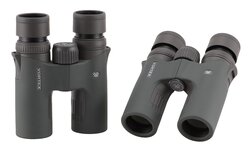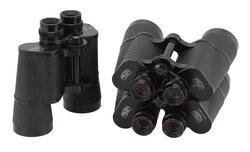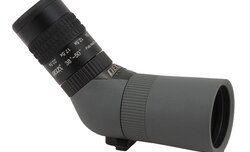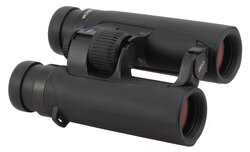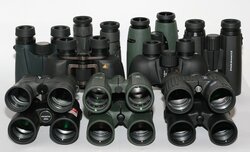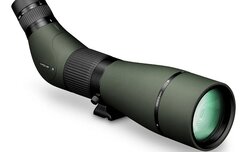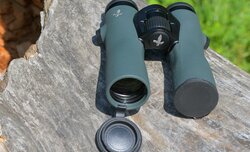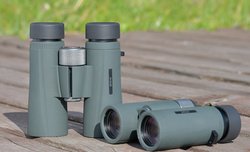The history of stabilized observation instruments goes back to 1980 when Fujinon launched the first Stabiscope pair of binoculars. Ten years later Zeiss showed their instrument, the 20x60 S. It\'s still an excellent pair of binoculars even for contemporary standards, with a completely mechanical stabilization system so it doesn\'t need any presence of electronic parts and power supply.
Almost every self-respecting optics manufacturer strives to include spotting scopes in their lineup. Most opt for two classes with objective lens diameters of 60-65 mm and 80-85 mm respectively, designed in both straight and angled versions.
It\'s not a big secret that I\'ve always liked Vortex Optics very much and for several reasons. First of all, their sport optics line-up is very rich; second, their products come with a wide range of prices.
Last years we have seen a real offensive of the Swarovski Optik company when it comes to top-of-the-range binoculars of the highest price and performance series. First, on 1st July 2020 we saw the launch of the new series called NL Pure (NL from Nature Lover).
The title of this article might be a bit misleading: we want to write about binoculars from Jena but we don\'t mention the name of the company connected to that city, Zeiss. It is done deliberately. Why? We are going to explain it in a while.
The current offer of binoculars, available on the market is dominated by 8×42 and 10×42 models; then come instruments with 8×32, 10×32 and 10×50 parameters. You don\'t have any problems with finding low light conditions 8×56 devices but they are rather available on the European market.
There are a lot of spotting scopes available on the market but when you start looking at them closely you can find that many of them come with some limitations. The first problem you might encounter concerns their size and, partially connected to that, the price tag.
Introduction I suppose everyone has experienced such a situation: you are on a trip, you watch the nature and all of a sudden you wish you had a small, handy optical instrument with a high magnification ratio at your disposal.
Not so long ago we published our review of the Vortex Viper HD 20-60x85 scope. We praised that instrument, not liking only the narrow field of view of the zoom-type eyepiece, added in the box. Still the Viper is not the end of the Vortex line-up and if you are interested in a larger field of view you might get interested in the Vortex Razor HD 27-60x85.
When it comes to production of 8×30/8×32 binoculars the Zeiss company has had many years of experience under their belt. Every fan of binoculars has heard of such models as the Deltrintem 8×30, launched as early as 1920, or the Dialyt 8×30 which, in many variations, reigned on the market from 1964 to the beginning of the 21st century.
Our idea of testing binoculars was conceived almost 20 year ago. The first full test was performed in November 2002 and its results were published in „Wiedza i Życie”, a Polish magazine which title in English means \'knowledge and life\'.
Vortex have had a rich selection of binoculars in their line-up from the very beginning, with more than a dozen model lines at different price-points. In the case of spotting scopes such a rich offer is impossible for obvious reasons – it would be difficult and pretty useless too.
In the middle of June 2020 journalists specialising in widely understood sports optics were informed that on 30 June there would be an online webinar concerning novelities launched by the renowned Swarovski Optik company.
To be honest I\'ve never been especially keen on pairs of binoculars with exit pupil of about 2 mm in diameter. In their case a combination of magnification and physical dimensions is such that the device seem to me too cumbersome to handle and not especially comfortable to look through.
In 2015 a new series of binoculars from the Japanese Kowa company was launched under a name of BD XD Prominar. It consisted of seven roof-prisms models with the following parameters: 8x32, 10x32, 8x42, 10x42, 8x56, 10x56 and 12x56.






